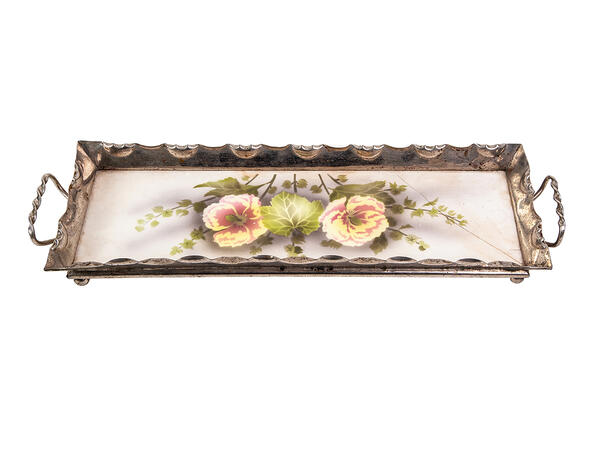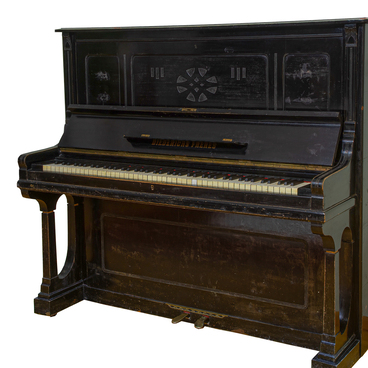The first metal trays appeared in Russia: researchers found references to them in documents from the Urals in 1746. At this time, papier-mache trays were popular, along with metal ones but they were less durable and reliable.
Experts believe that metal trays in Russia appeared when the tea drinking tradition became popular. The first such items began to be made from sheet iron in the 18th century in the Urals Nizhny Tagil mining plant of the industrialists Demidovs. The founder of the dynasty, Nikita Demidov, was a Tula armorer and an associate of Peter the Great. He was one of the first to explore the ore deposits in the Urals and founded five factories in the region, thus laying the foundation for the future mining empire
The first Nizhny Tagil trays were massive and usually had a rectangular shape. Such items were decorated with genre scenes (a popular subject, for example, was the wedding of Peter the Great) and floral compositions. Andrey Khudoyarov, a serf of the Demidovs, invented a special lacquer based on resin with linseed oil and turpentine for painting kitchen utensils. It was superior to English and French ones and created a ‘crystal’ effect.
Zhostovo items were also popular. This suburban Moscow center of folk crafts began to form in the early 19th century. Over time, the main motif of Zhostovo painting became a floral bouquet.
The tray from the museum’s collection was produced by Villeroy & Boch. This firm came into being in 1836 as a result of the merger of family enterprises run by Jean-François Boch and Nicolas Villeroy, the industrialists, who specialized in the production of faience and porcelain. The company’s first workshop produced so-called ‘porcelain for the bourgeoisie’ — expensive items made from Chinese material that only noble families and royalty could afford. By the beginning of the 20th century, the company had become the largest manufacturer of ceramics, porcelain, faience, crystal and metal products. Its product range included sanitary ware, tableware, tiles and bricks, a variety of church utensils and tombstones, drain pipes and even electrical wiring insulation.
Experts believe that metal trays in Russia appeared when the tea drinking tradition became popular. The first such items began to be made from sheet iron in the 18th century in the Urals Nizhny Tagil mining plant of the industrialists Demidovs. The founder of the dynasty, Nikita Demidov, was a Tula armorer and an associate of Peter the Great. He was one of the first to explore the ore deposits in the Urals and founded five factories in the region, thus laying the foundation for the future mining empire
The first Nizhny Tagil trays were massive and usually had a rectangular shape. Such items were decorated with genre scenes (a popular subject, for example, was the wedding of Peter the Great) and floral compositions. Andrey Khudoyarov, a serf of the Demidovs, invented a special lacquer based on resin with linseed oil and turpentine for painting kitchen utensils. It was superior to English and French ones and created a ‘crystal’ effect.
Zhostovo items were also popular. This suburban Moscow center of folk crafts began to form in the early 19th century. Over time, the main motif of Zhostovo painting became a floral bouquet.
The tray from the museum’s collection was produced by Villeroy & Boch. This firm came into being in 1836 as a result of the merger of family enterprises run by Jean-François Boch and Nicolas Villeroy, the industrialists, who specialized in the production of faience and porcelain. The company’s first workshop produced so-called ‘porcelain for the bourgeoisie’ — expensive items made from Chinese material that only noble families and royalty could afford. By the beginning of the 20th century, the company had become the largest manufacturer of ceramics, porcelain, faience, crystal and metal products. Its product range included sanitary ware, tableware, tiles and bricks, a variety of church utensils and tombstones, drain pipes and even electrical wiring insulation.



